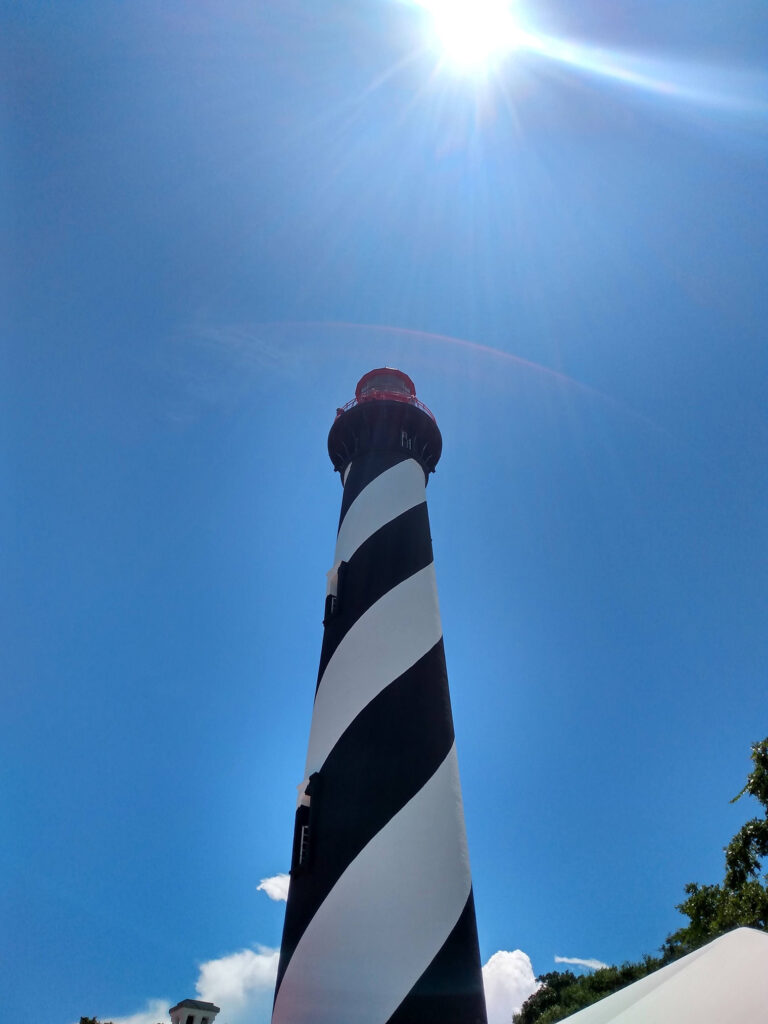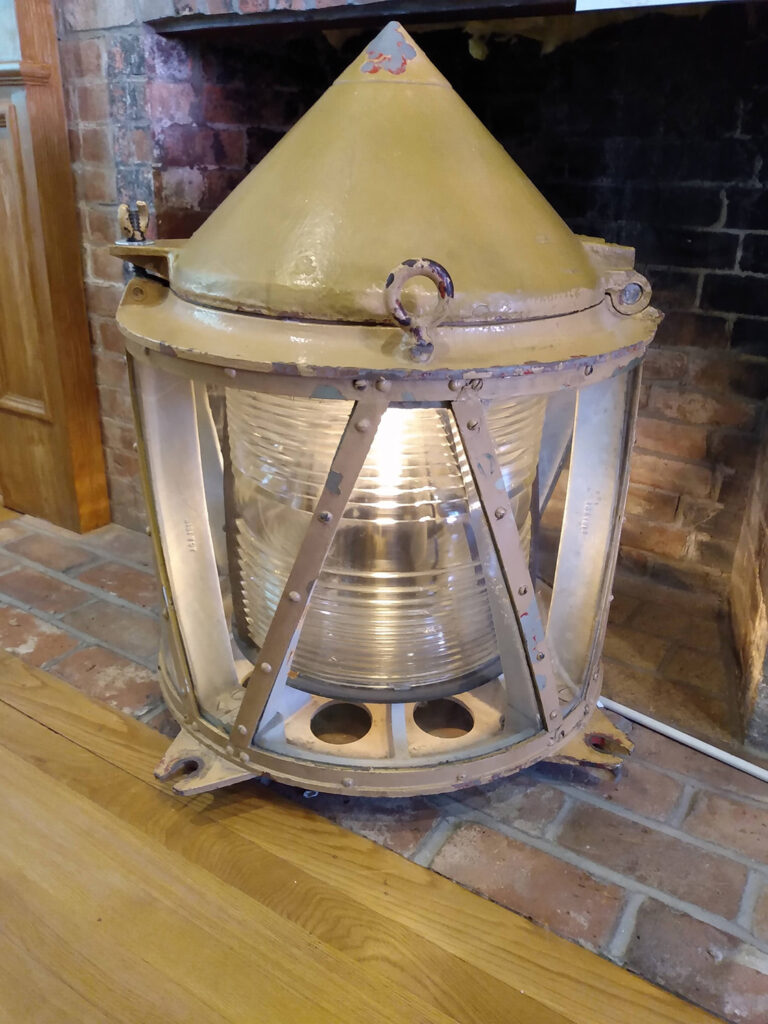The audio version of this Pinch of the Past was first shared in Episode 38: Guest Tracie Peterson and a Review of This Hallowed Ground by Donna E. Lane
Today’s Pinch of the Past once again visits a historic landmark in my hometown. It’s over four hundred years of history, so I’m only going to touch on a few high points in the story of the St. Augustine Lighthouse.

The Watchtower
Across the bay from the town of St. Augustine is Anastasia Island, which proved the perfect place for a watchtower looking out over the ocean. In 1737, an earlier wooden watchtower was replaced by a 30-foot tower built of coquina, a local sedimentary limestone which is soft when quarried, but hardens in the air.
Watchmen used a spar and halyards to signal the town with what direction ships were approaching. Ships from the north might mean enemy British troops.
In 1763, at the end of the French and Indian War, the British took control of Florida. They added another 30 feet of wooden construction to the St. Augustine watchtower. Documents and maps from the period mention a lighthouse on Anastasia Island, but not much is known about its operation.
In 1783, just 20 years later, Florida returned to Spanish rule at the end of the American Revolution. The Spanish tore down the wooden addition to their tower and refortified the stone construction. Once again, it was used only as a lookout rather than a lighthouse.

The Lighthouse
When the U.S. acquired Florida, they put the watchtower to use as a lighthouse. Using Winslow Lewis Argand lamps and reflector panels, U.S. lighthouses cast light far short of their European counterparts. In an effort to combat this, the watchtower received a 10-foot addition in 1852, bringing it to 40 feet in total.
One year later, the U.S. Treasury finally paid for a Fresnel lens which cast the light much farther out to sea. The invention of the Fresnel lens had revolutionized lighthouses, and they came in six orders, with the first order being the strongest and largest lens. St. Augustine received a fourth-order lens. Whale oil fueled the single lamp inside.
During the brief Confederate occupation of St. Augustine, the lens was stolen and hidden to interfere with Union shipping. But in 1867, the lens was restored, and the keeping of the light transferred to so-called professional who were transplanted from the North as part of Reconstruction.
To the seafarers hundreds of years ago, lighthouses could mean the difference between life and death. In our days of GPS and radar navigation, we don’t rely on their light. But I find them inspiring. No matter how dark the night, a light still shines.


One Reply to “St. Augustine Lighthouse Part 1”
Comments are closed.